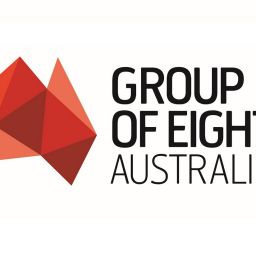June 21, 2016
Australian Financial Review
By Vicki Thomson
For those of us in the higher education sector there was that very special one day last year when the positive vision from Prime Minister Malcolm Turabull was infectious. He told us that our future was innovation.
To see a prime minister who understands the centrality of innovation to our national future and with it the need for a highly-educated workforce and a strong research and innovation base was invigorating. Some 10 months on and the hard graft needs to begin if we are to turn this vision into a reality. For its part, the Group of Eight universities (Go8), Australia’s world-leading research intensive universities has released publicly its Priority Directions document for an incoming federal government.
The Go8’s lead priority is that we must recapture that special day, and transform positive sentiment into real, concrete action. Not just activity, but action. Real action such as we see from Canada, the UK, the US, Israel, Europe, New Zealand and Singapore. Real action that is simple, that recognises that the research undertaken in a nation’s universities is the foundation of an innovative economy. Some of these competitors were on their fiscal knees in the global financial crisis – Australia was lucky enough not to suffer this fate.
But as these nations began to regroup and recover from that financial meltdown, they were brave enough to realise that innovation was their lifeline, and to take the hard decisions to prioritise it over other pressures. These nations have taken the route of choosing a long-term successful investment in their nation’s future – university research. Canada’s Trudeau government’s first budget in March had a big increase in funding to the higher education and research sector, including an additional $C95 million ($99 million) per year to Canada’s research funding councils, starting in 2016.
In the UK, even though the GFC precipitated a period of “great recession” from 2008 to 2013, the government remained committed to innovation and “ring-fenced” its budget for science and research funding (which includes higher education) in real terms, including a £4.7 billion ($9.1 billion) science budget and also committed to maintaining capital spending on research facilities. Again, this was essential prioritising regardless of fiscal woes. In Europe, regardless of the GFC, and in factprobably because of it $120 billion worth of funding for research and innovation from 2014-20 has been prioritised.
Singapore embraced an innovationdriven economy in the 1990s. Its latest five-year technology plan, announced in January, includes $19 billion for research and innovation, an increase of 18 per cent over the previous plan. There can be no innovative nation, no knowledge economy without thriving university research. It’s that simple. And in Australia, where more research takes place within universities, university research needs to be celebrated as one of our greatest national assets We understand that there are not endless buckets of money.
We accept that governments must operate according to fiscal constraints. But we also understand the need to prioritise for the benefit of all Australians. This means that we must prioritise research so that funding reflects costs, that we target our spending of education dollars to best effect and finally that our innovators of tomorrow are presented with no financial barriers to a university education, which is their grounding in innovation.
In short, we must be innovative in how we fund and structure higher education research and education. It is up to government to set the terms under which universities can deliver innovation in teaching and research so that we can deliver for the nation. The Go8 is hopeful that we now have both sides of politics and a university sector willing to undertake the hard work to make this happen. As a nation we can’t afford not to.
Contact: Vikci Thomson 0417 808 472




